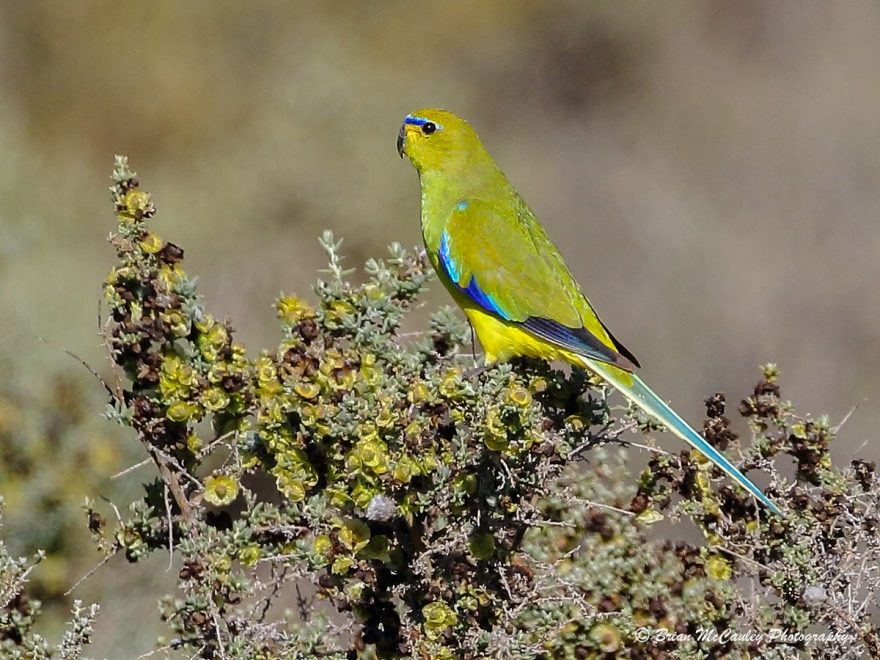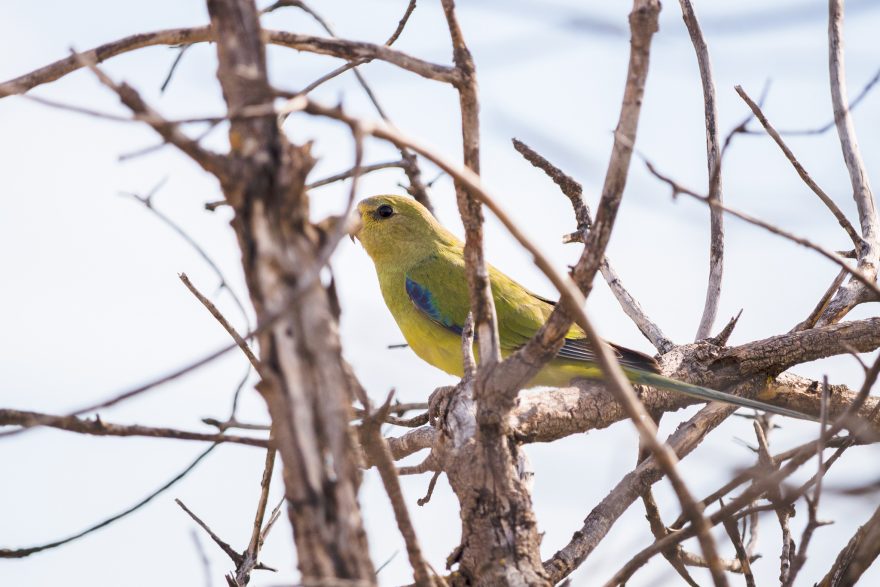The Elegant Parrot is a small parrot found in the southern and western parts of Australia. They are popular in captivity thanks to their minimal care requirements and compatibility with other species in a mixed aviary. This popularity has made them common and affordable, making them an ideal species for beginners. Elegant parrots, along with the other species in the Neophema genus, are colloquially referred to as “grass parrots” within the pet trade.

Diet & Feeding
A quality small parrot seed mix is the staple of the Elegant parrot’s diet. Seed should be stored in an airtight plastic drum to prevent exposure to vermin and moisture. Dry seed mixes are most nutritious when they have been soaked or sprouted.
Captive Elegant parrots love to eat green seeding grasses, just like their cousins in the wild would. Unless the aviary is immensely large and grasses can grow faster than the birds can consume them, it may be necessary to plant seeding grasses into pots which can be rotated out to allow the plant to recover. It’s a good idea to plant some of your purchased seed mix in pots, not just because birds love seeding grasses, but to confirm the quality of your seed supply.
Elegant parrots should be provided with a wide variety of fruit and vegetables. Green leafy vegetables such as kale, bok choy, and endive are especially important. Apple, pear, corn, carrot and broccoli are readily consumed. As with all birds; avocado, chocolate, caffeine and alcohol are toxic and should not be fed.
They are known to sometimes consume insects when breeding, especially if housed with other insect-eating bird species from whom they can learn this behavior. Mealworms are most commonly offered.
Housing & Compatibility
Elegant parrots can be kept in a variety of different aviary types, but bigger is always better. They enjoy foraging on the ground so traditional aviaries are slightly preferred over suspended flights. The substrate of the aviary should be kept clean and dry to reduce the likelihood that the bird contracts a disease or parasite.
Elegant parrots are a placid species and can cohabitate with most finches, quail and some small parrots. They can be housed as a small colony or in single pairs. They are known to become active at night which may disrupt roosting birds with which they share an aviary.
They should not be housed in the same aviary as other Neophema parrots (except Bourke’s parrots) as hybridization will occur.
Elegant parrots should be provided with an adequate amount of flying space to ensure they receive adequate exercise. Birds that do not have room to fly may suffer from stress or obesity. A minimum of two meters (6.5ft) of uninterrupted flying space is recommended.
Non-toxic leaves and branches should be provided for chewing. They will be destructive to foliage in a planted aviary.

Breeding
Elegant parrots will breed from twelve months of age, but best results are achieved once the birds reach two years. The breeding season is from spring through to early summer, though other times of the year are not unheard of.
A medium sized nesting box or hollow log will be used. Elegant parrots can produce up to three clutches per year, each containing between 3-6 young. Eggs are incubated for approximately 18 days and fledge the nest at four weeks of age. They become fully independent 3-4 weeks later.
Health
As a grass parrot species, Elegant Parrots spend a significant amount of time foraging at ground level. It’s important to keep the aviary floor clean and dry. A preventative worming and parasite control regime should be used.
A healthy Elegant Parrot has a life expectancy of ten years in captivity. Some sources claim to have observed birds exceeding twenty years of age.